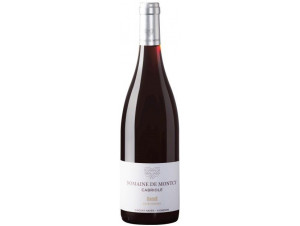You have no items in your shopping cart.
Wine Cheverny
The Cheverny appellation is located on the left bank of the Loire near Blois. Famous for its châteaux, this valley is full of gastronomic savoir-vivre. The wines of Cheverny are part of it and are original by the fact of the assembly. The wines of this appellation are well known for their elegance, subtlety and finesse. Read more on Cheverny
-
Top Selling
-
Top Selling-17%
-
Top Selling-17%
- -17%
Appellation Cheverny
The Cheverny vineyard dates from the 5th century
The birth of the Loire Valley vineyard is dated to the 5th century. This vineyard experienced real development from 1577. On this date, the Parliament of Paris prohibited Parisians from buying wines produced less than 88km away. The consumption needs of the inhabitants of Paris led to the development of vineyards for commercial purposes around the towns of Orléans, Blois and Tours. The wines reached Paris from the 17th century onwards thanks to the Orleans and Loing canals which linked the Loire and the Seine.
In the 18th century the demographic growth of Paris and thus the demand for cheap wine, will encourage the vineyards of the Loire valley to plant producing grape varieties. Cheverny did not follow this trend and continued to produce high quality wines known until the 20th century as "Sologne wine". The phylloxera crisis at the end of the 19th century will change the vineyard grape varieties. 9 grape varieties are authorised, hence the tradition of blending for the wines of this appellation.
The AOC Cheverny was recognised by the INAO in 1993. Rich in history, the Loire Valley and part of its vineyards were listed as a World Heritage Site by UNESCO in 2000. The desire of the winegrowers of Cheverny, to make their wines known gave rise to the creation of wine houses near the châteaux of Cheverny and Chambord. They are now part of the jewels of the Loire gastronomy.
The vineyards of Cheverny are located between the Loire and the Sologne
The Cheverny appellation covers 24 communes in the Loir-et-Cher department (Condésur beuvron, Cellettes, Cheverny, Chitenay, Cormeray, Cours-Cheverny, Feings, Fougères sur bièvre, Fresnes, Huisseau-sur-Cosson, Maslives, les Montils, Montlivaut, Mont-Prés-Chambord, Muides-sur-Loire, Ouchamps, Saint-Claude-de-Diray, Saint-Dye-sur-Loire, Saint-Laurent-Nouan, Sambin, Seur, Tour-en-Sologne and Vineuil.) On the left bank of the Loire, this appellation of approximately 575 ha is laid out in islands along the river and in the clearings of the wooded massifs of the geographical area. This appellation has about forty winegrowers.
In the North-West of the appellation the soils are limestone. This limestone is bedded with a marly tendency. In the South-West of the appellation, the vineyard is established on the Sologne formation which is sablo-clayey. In some places, the leaching of the soils depletes them of clay and they are therefore mostly sandy soils. Some plots have clayey-siliceous soils with chalky subsoils. The entire appellation is drained from west to east by the rivers Beuvron and Cosson and their tributaries. The degraded oceanic climate gives rise to annual rainfall of around 650 mm per year and cooler temperatures.
The wines whether white, red or rosé are made from a blend of grape varieties. The white wines are made from a variable blend of Sauvignon blanc/Sauvignon gris with the possibility of adding up to 15% of Chardonnay, Chenin or Arbois. For red and rosé wines the blend must be composed of Pinot Noir and Gamay with the possibility of completing it with Cabernet Franc, Cabernet Sauvignon or Côt.
The typicalities of a Cheverny wine
The diversity of soils and the possibility of varying the blends for each winemaker result in very different wines. There are common denominators for each colour.
The white wines have a pale yellow colour with worm-like highlights. The nose presents aromas of citrus fruits, exotic fruits, white flowers with sometimes a vegetal touch. The palate is balanced between roundness and vivacity.
The red wines have a purple red colour. The nose is dominated by fruity notes, somewhat spicy. The evolution gives gamey notes. The palate is full with delicate tannins.
The rosé wines have a pale pink coat. The nose has aromas of red fruits with some spicy notes. The palate is a balance between liveliness and roundness. These wines should be consumed in their youth.
The Cheverny AOC and gastronomy
The liveliness, finesse and roundness of the white wines will go well with baked or grilled fish, andouillettes, or quiches. They can be enjoyed with goat's cheese from the region. They are also suitable for a simple aperitif. The finesse and subtlety of red wines will go well with white meat such as chicken or pork. Burgers will highlight the elegance of the wines. They can be enjoyed with cheeses such as Camembert. The jovial and fruity side of rosés will encourage you to drink them as an aperitif or during a barbecue.
The unmissable domains of the Cheverny appellation
The Philippe Tessier estate
The family estate is located in Cheverny. The 25 ha of the estate are cultivated according to the organic farming method. The aim is to produce wines that reflect their origin, the vintage and "a bit of the winemaker" and this is very successful.The Domaine des Huards
Owned by the Gendrier family, it is located in the commune of Cour-Cheverny. It is the only one of its kind in the world to have been built in the 1960s and 1970s, and it is the only one of its kind in the world to have been built in the 1970s and 1980s. Their expansion has led them to produce Cheverny wines. Biodynamic farming, the estate's cultivation method since 1998, allows them to obtain wines that reflect their origin and vintage while preserving the environmental balance.The Hervé Villemade estate
Based in Cellettes, he farms 25 ha according to the principles of organic farming. He applies winegrowing principles that enable him to obtain great wines that will never cease to surprise every wine lover.
Vallée de la Loire appellations



























 TWIL - Achat de Vin
TWIL - Achat de Vin


